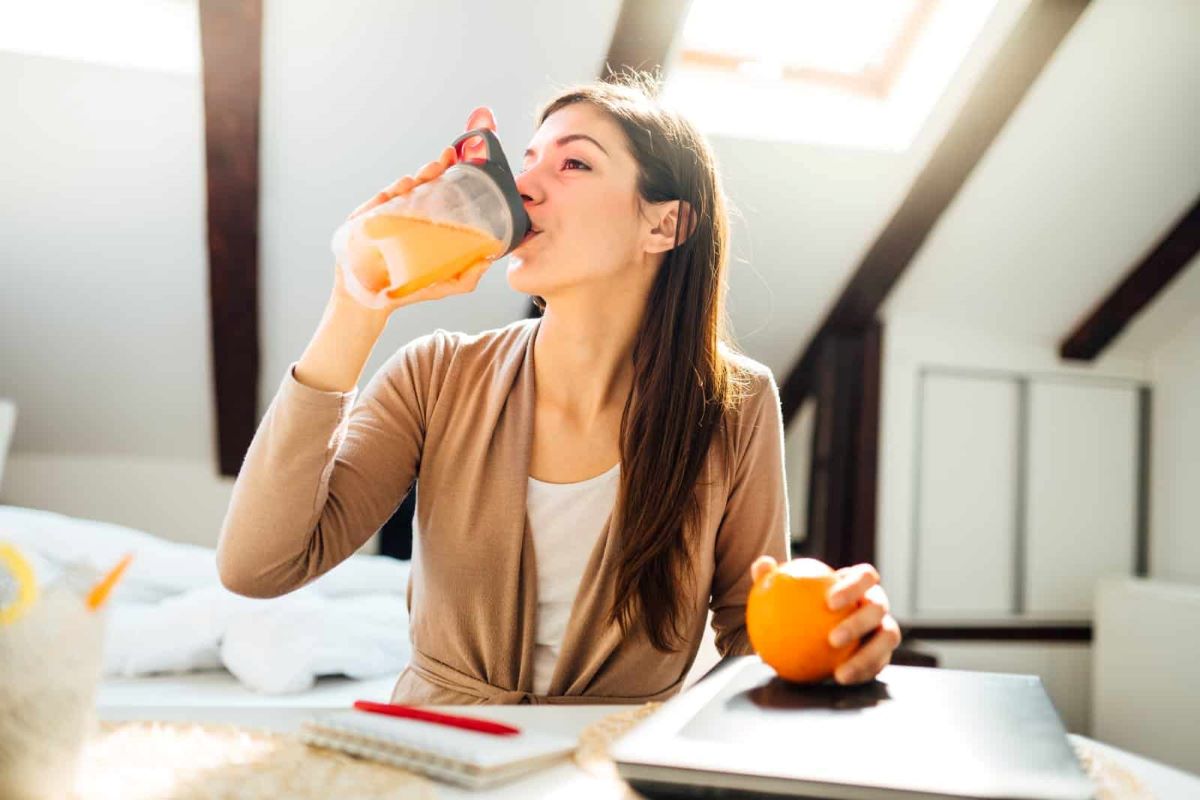Taking a break from alcohol, even for just a month, can have profound impacts on your health and overall well-being. Here are 21 ways your body will show its gratitude when you say no to booze.
1. Improved Hydration
Alcohol is a diuretic, which means it leads to increased urination and, consequently, dehydration. Quitting alcohol can improve your body’s hydration levels, making your skin look more radiant and your body function more efficiently.
2. Better Sleep Quality
Although alcohol might help you fall asleep faster, it interferes with the quality of sleep. Abstaining can lead to deeper, more restful sleep.
3. Enhanced Brain Function
Alcohol can affect your brain’s neurotransmitters and slow down cognitive functions. Giving it up even for a month can sharpen your memory and improve concentration.
4. Weight Loss
Alcohol is high in empty calories. Cutting it out can help you lose weight, especially if you’re not replacing those calories with other unhealthy choices.
5. Liver Regeneration
Your liver is incredibly resilient and capable of repairing itself from damage caused by alcohol consumption. A month off can kickstart this healing process.
6. Lower Blood Pressure
Regular alcohol consumption can raise your blood pressure. Taking a break can help lower it, reducing your risk of heart disease.
7. Improved Digestion
Alcohol can irritate your gastrointestinal tract, leading to problems like acid reflux and gastritis. Quitting can help your digestive system recover.
8. Enhanced Immune System
Alcohol can weaken your immune system, making you more susceptible to illnesses. Abstaining strengthens your body’s natural defences.
9. Increased Energy Levels
Without alcohol’s sedative effects, you may notice an increase in energy levels and less fatigue during the day.
10. Healthier Skin
Alcohol dehydrates your body, including your skin. Cutting it out can lead to clearer, more hydrated skin.
11. Better Heart Health
Abstaining from alcohol can reduce your risk of developing heart disease by lowering blood pressure, reducing inflammation, and decreasing the risk of cardiomyopathy.
12. Stabilized Blood Sugar Levels
Alcohol can interfere with your body’s ability to regulate blood sugar. Giving it up can help stabilize these levels.
13. Reduced Risk of Cancer
Regular alcohol consumption is linked to an increased risk of several types of cancer. Quitting reduces this risk.
14. Improved Mental Health
Alcohol can exacerbate symptoms of anxiety and depression. Many people notice improvements in their mental health after quitting.
15. Enhanced Nutrient Absorption
Alcohol can affect your body’s ability to absorb nutrients. Abstaining allows your body to process vitamins and minerals more efficiently.
16. Lower Cholesterol
Quitting alcohol can help lower your LDL (bad) cholesterol levels, further protecting your heart.
17. Improved Reproductive Health
Alcohol can impact hormone levels and reproductive health. Cutting it out can lead to improvements in both areas.
18. Better Athletic Performance
Alcohol affects muscle recovery and hydration levels, impacting athletic performance. Abstaining can lead to improvements in strength and endurance.
19. Decreased Inflammation
Alcohol can contribute to inflammation in the body. Quitting can reduce this inflammation, leading to overall health improvements.
20. Stronger Bones
Alcohol can interfere with the body’s absorption of calcium, weakening bones. Abstaining can help improve bone density.
21. Improved Relationships
While not a direct physical benefit, abstaining from alcohol can improve your relationships, as you’ll likely be more present and engaged with loved ones.
Conclusion
Quitting alcohol, even temporarily, can have a multitude of benefits for your body. The advantages are clear: better sleep and improved mental health, stronger bones, and a healthier heart. Your body will thank you for the break, and you might just find the motivation to make healthier choices moving forward.
Featured Image Credit: Shutterstock / eldar nurkovic.
The content of this article is for informational purposes only and does not constitute or replace professional advice.
The images used are for illustrative purposes only and may not represent the actual people or places mentioned in the article.
For transparency, this content was partly developed with AI assistance and carefully curated by an experienced editor to be informative and ensure accuracy.

